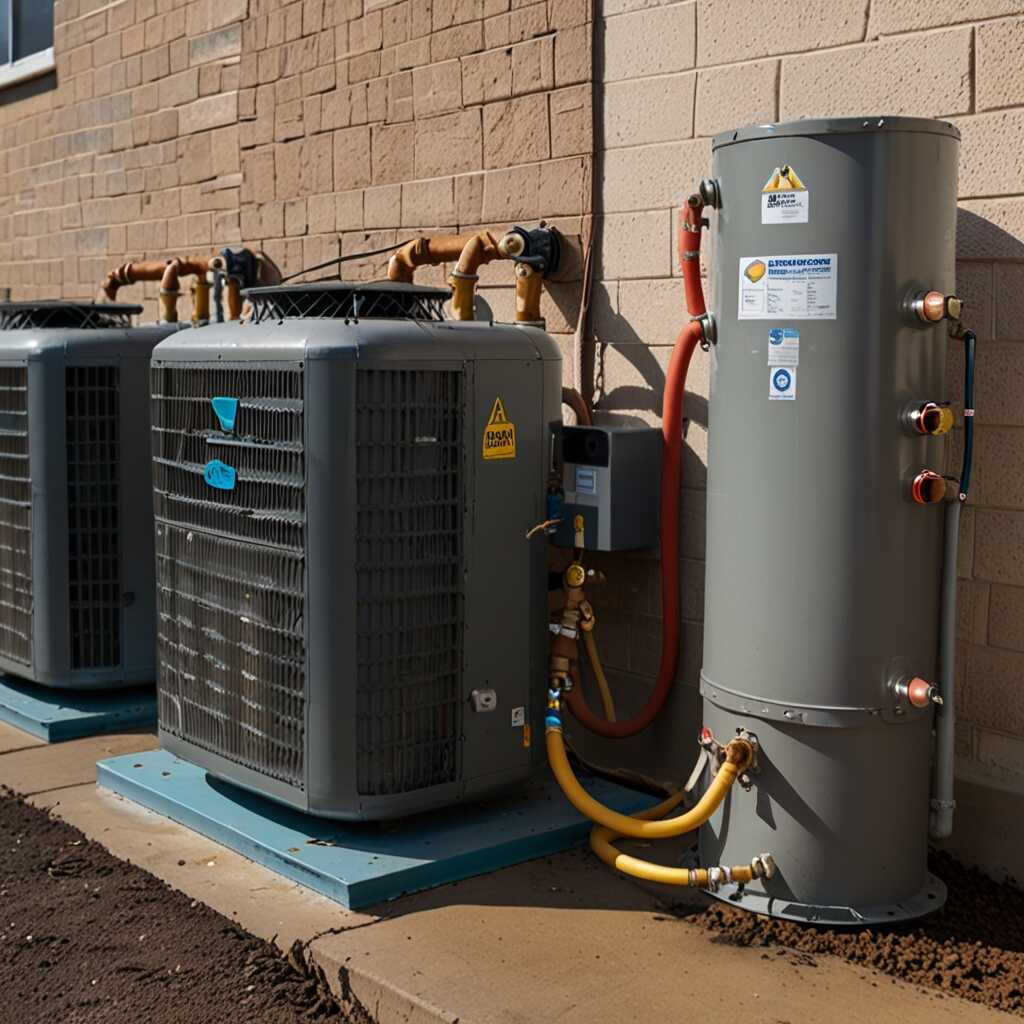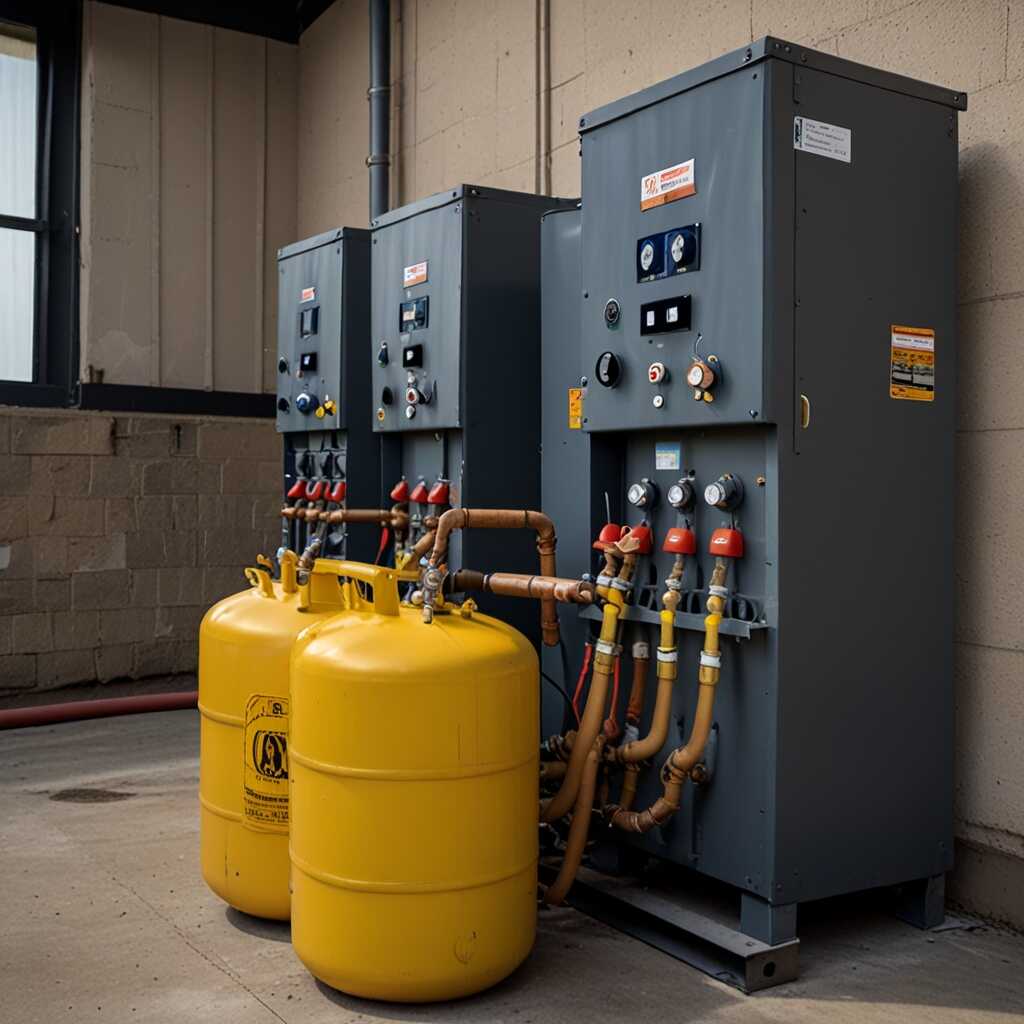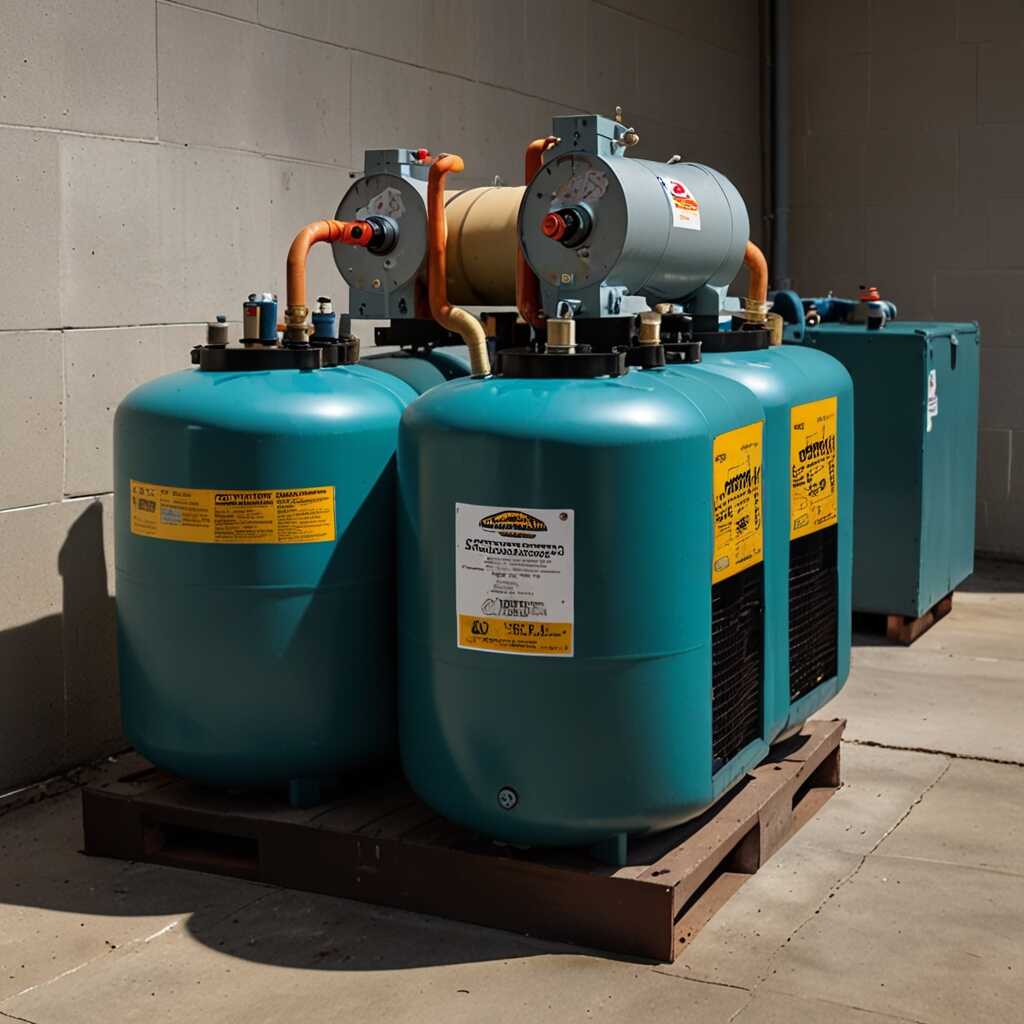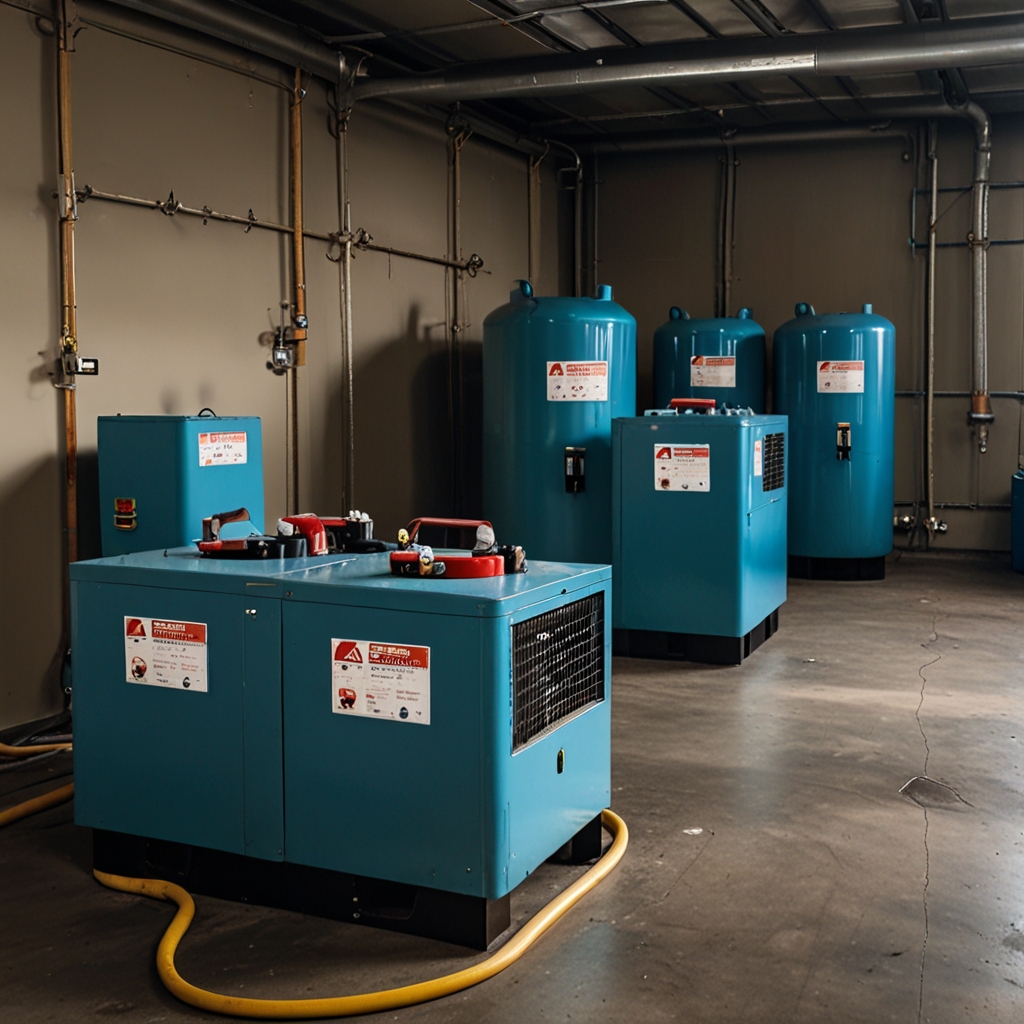Helical coil refrigerant recovery heat exchangers significantly enhance thermal efficiency in HVAC systems. These innovative devices optimize the recovery of refrigerants, minimizing energy waste during the cooling process. Refrigerant Recovery Pro highlights their role in improving operational effectiveness and compliance with industry regulations. Understanding these heat exchangers can help HVAC professionals implement better refrigerant recovery practices and boost overall system performance.
Principles of Operation
Helical coil heat exchangers operate based on principles of fluid dynamics and heat transfer. They consist of a coil-shaped configuration that allows the refrigerant to flow efficiently. The design enhances thermal exchange by increasing the contact area between fluids. This results in improved heat transfer rates. The geometry enables the refrigerant recovery systems to maximize thermal efficiency. Compared to conventional heat exchangers, helical coils can enhance thermal efficiency by up to 30%. This makes them a reliable choice for HVAC professionals seeking optimized performance.
Components of Helical Coil Heat Exchangers
The components of helical coil heat exchangers include the coil tubing, inlet and outlet connections, and insulation. The coil tubing is where the refrigerant flows, facilitating heat exchange. Inlet and outlet connections play vital roles in maintaining fluid flow. Insulation minimizes heat loss during the transfer process. Effective interactions among these components lead to improved refrigerant recovery systems. This design helps deliver high-quality thermal efficiency while ensuring durability and reliability.
Specific Advantages of Helical Coil Heat Exchanger Designs
Helical coil heat exchangers provide several unique advantages in refrigerant recovery systems. They offer significant efficiency improvements over traditional designs. The spiral configuration increases the heat transfer area while maintaining a compact structure, reducing space requirements. This design leads to a more reliable overall system performance. For example, studies show that helical coil heat exchangers can enhance thermal efficiency by 15% to 30% in HVAC systems. Moreover, they help reduce refrigerant loss during recovery, which can result in cost savings and regulatory compliance benefits.
Comparative Performance of Helical Coil vs. Other Designs
Helical coil designs are superior when it comes to performance compared to flat or plate heat exchangers. The unique configuration enables faster fluid flow rates while minimizing pressure drops. This helps maintain consistent temperature profiles throughout the unit. In rigorous testing, helical coils consistently outperformed other designs by achieving up to 30% better thermal efficiency. They are also easier to install and maintain, making them a preferred choice in modern HVAC applications. This robust performance ensures that HVAC systems operate reliably and efficiently, enhancing long-term benefits for technicians and users alike.

The Importance of Surface Area in Improving Thermal Efficiency
Surface area plays a vital role in thermal efficiency, especially in helical coil heat exchangers. The helical design increases the surface area available for heat exchange, enabling better heat transfer between the refrigerant and surrounding medium. Materials like copper or aluminum are often used in these designs to enhance thermal performance. Studies show that by increasing the surface area, thermal efficiency can improve by as much as 25%. This innovation helps HVAC systems achieve better refrigerant recovery, making them more effective and reliable in performance.
Understanding Heat Transfer Mechanics in Helical Coils
Heat transfer mechanics in helical coils involve both conduction and convection processes. The enhanced surface area allows for greater fluid dynamics, which leads to improved heat transfer rates. In helical coil designs, the curved surfaces promote turbulence, enabling more effective contact between the refrigerant and the coil surface. This results in a more efficient heat exchange process that is crucial for refrigerant recovery applications. HVAC professionals can leverage this technology to enhance system performance and ensure reliable operation.
Key Statistical Insights on Thermal Performance
- Helical coil designs can increase heat transfer efficiency by up to 30%.
- These systems can reduce energy consumption by nearly 20% in some HVAC applications.
- Investing in modern heat exchangers can lead to payback in under two years.
- Recovery efficiencies can reach upwards of 90% with proper system design.
- Diverse coolant types can be processed effectively, enhancing versatility.
- Regular maintenance can sustain efficiency, extending the system’s lifespan by 15% to 20%.
- Users report performance stability even in extreme temperature variations.

Evaluating Helical Coil Heat Exchangers Against Traditional Options
Helical coil heat exchangers provide several advantages over traditional triangular and rectangular designs. Their unique shape enhances fluid dynamics, enabling better heat transfer. The curved structure of a helical coil maximizes surface area and minimizes pressure drop. This results in superior thermal efficiency. Many manufacturers like Heat Transfer Solutions and Advanced Heat Exchangers are known for producing high-quality models. In testing, helical coil models have shown a thermal efficiency improvement of around 25% compared to traditional designs. This data highlights the enhanced performance of helical coil heat exchangers in practical applications.
Comparative Analysis of Performance Metrics
A comparative analysis of performance metrics between helical coil heat exchangers and traditional designs reveals crucial insights for HVAC professionals. Helical coils can handle higher flow rates, which boosts efficiency. This design reduces turbulence, leading to stable and reliable performance. Research shows that helical coil heat exchangers enhance heat transfer rates by 30% under specific conditions. The streamlined nature of helical coils also allows for easier maintenance. Regular reviews of operational metrics confirm their reliability and effectiveness in various HVAC applications.

Critical Installation Techniques for Optimal Heat Exchanger Performance
To maximize the performance of helical coil refrigerant recovery heat exchangers, it is essential to adhere to several key installation techniques. Proper piping alignment ensures optimal flow, while utilizing high-quality insulation minimizes heat loss. It’s also important to regularly review and test connections, ensuring reliability over time. Integrating components like variable speed pumps can enhance thermal efficiency. The interaction of these systems with original HVAC technologies is essential for achieving the best results. Efficient positioning and strategic component integration lead to improved system performance, making helical coil technologies a preferred choice.
Best Practices for Installation and Adjustment
Employing best practices during installation significantly enhances the thermal efficiency of helical coil systems. The recommended installation angle typically ranges from 15 to 30 degrees, optimizing gravity flow and preventing liquid refrigerant from pooling. Properly leveling the unit ensures the refrigerant flows correctly throughout the coil. Regular adjustments during setup help reduce pressure drops and improve system reliability. The ease of installation and adjustment makes these systems favorable for HVAC professionals. Following these proven practices contributes to long-term system performance and efficiency, ensuring that you get the most from your refrigerant recovery efforts.
Advantages of Using Advanced Heat Transfer Systems
- Improved thermal efficiency leads to lower energy bills for end-users.
- Helical coils facilitate optimal refrigerant recovery, enhancing HVAC lifecycle.
- Systems generally require less maintenance due to their robust design.
- Increased efficiency supports compliance with environmental regulations.
- Quick installation can minimize downtime during upgrades or repairs.
- Enhanced system reliability reduces the risk of unexpected failures.
- Encourages sustainable practices by reducing overall refrigerant waste.

Effective Maintenance Strategies for Achieving Long-Term Efficiency
Top maintenance practices for helical coil heat exchangers ensure their longevity and reliability. Regular cleaning prevents refrigerant buildup. Inspections help identify leaks or corrosion early. Environmental conditions impact maintenance frequency. Extreme temperatures or humidity can accelerate wear. To maintain optimal performance, testing should occur every six months. These practices improve efficiency and extend the life of the heat exchangers. HVAC professionals should document findings in reviews for future reference.
Understanding Environmental Impacts on Maintenance
Environmental conditions significantly influence the maintenance needs of helical coil heat exchangers. Humidity can lead to corrosion, requiring more frequent inspections. High dust levels can clog coils, decreasing heat transfer efficiency. Adverse weather affects outdoor units, making shelter important. HVAC professionals should develop strategies based on local climatic factors. Regular monitoring enhances durability and helps prevent unexpected failures. This approach ensures sustained performance in varied environments.
Navigating Regulatory Standards Affecting Heat Exchanger Choices
Understanding regulatory standards is essential for HVAC professionals selecting heat exchangers for refrigerant recovery systems. Key regulatory agencies such as the EPA and ASHRAE dictate guidelines that impact system design, efficiency, and reliability. Compliance with these regulations ensures the selection of heat exchangers that meet safety and environmental requirements. The regulations emphasize refrigerant recovery compliance, which aims to minimize leakage and improve overall HVAC system efficiency. Keeping updated with these standards helps technicians make informed choices about equipment and practices that enhance thermal efficiency.
Influential Regulatory Agencies and Their Requirements
Several influential regulatory agencies shape the standards governing heat exchanger performance in HVAC systems. The EPA (Environmental Protection Agency) sets critical guidelines for refrigerant management, including limits on refrigerant leakage and recovery efficiency. ASHRAE (American Society of Heating, Refrigerating, and Air-Conditioning Engineers) develops standards focusing on heat exchanger design parameters that ensure optimal performance. Familiarity with these organizations’ research and data equips HVAC professionals to select durable and reliable heat exchangers. This knowledge directly enhances compliance with current EPA regulations, making systems more sustainable and efficient.
Popular Solutions in Refrigerant Management Systems
- Brand A focuses on high-efficiency coils and offers superior heat exchange.
- Brand B is known for user-friendly designs but has a slightly lower efficiency rating.
- Brand C provides customizable designs that fit various HVAC configurations.
- Brand D emphasizes quick installation but may require frequent servicing.
- Businesses in warm climates benefit most from these systems’ energy-saving capabilities.
- Schools and hospitals seek reliable heating solutions, making this technology appealing.
- Contractors appreciate easy-to-install units, streamlining their installation processes.
Future Directions in Helical Coil Heat Exchanger Technologies
Emerging trends in helical coil heat exchanger technologies focus on enhanced thermal efficiency and sustainability. These advancements include the development of smarter, more efficient designs that maximize heat recovery from refrigerants. Industries such as HVAC, automotive, and food processing are likely to adopt these innovations due to their potential to cut costs and improve energy use. Research shows that utilizing helical coil devices can lead to thermal efficiency gains of 10 to 20 percent. These technologies are designed to enhance refrigerant recovery methods, ultimately benefiting various sectors.
Impact of Advanced Helical Coil Technologies on HVAC Efficiency
Advanced helical coil technologies significantly improve HVAC system efficiency by optimizing heat exchange processes. These innovations include the integration of smart controls and sensors that monitor and adjust performance in real-time. Enhanced designs offer features like variable geometry to better match operational demands, ensuring reliable and consistent efficiency. Research indicates that implementing such innovations can improve thermal efficiency by up to 25% by 2025. This progress helps HVAC systems achieve greater sustainability, reduce environmental impact, and lower energy costs while aligning with regulatory compliance.